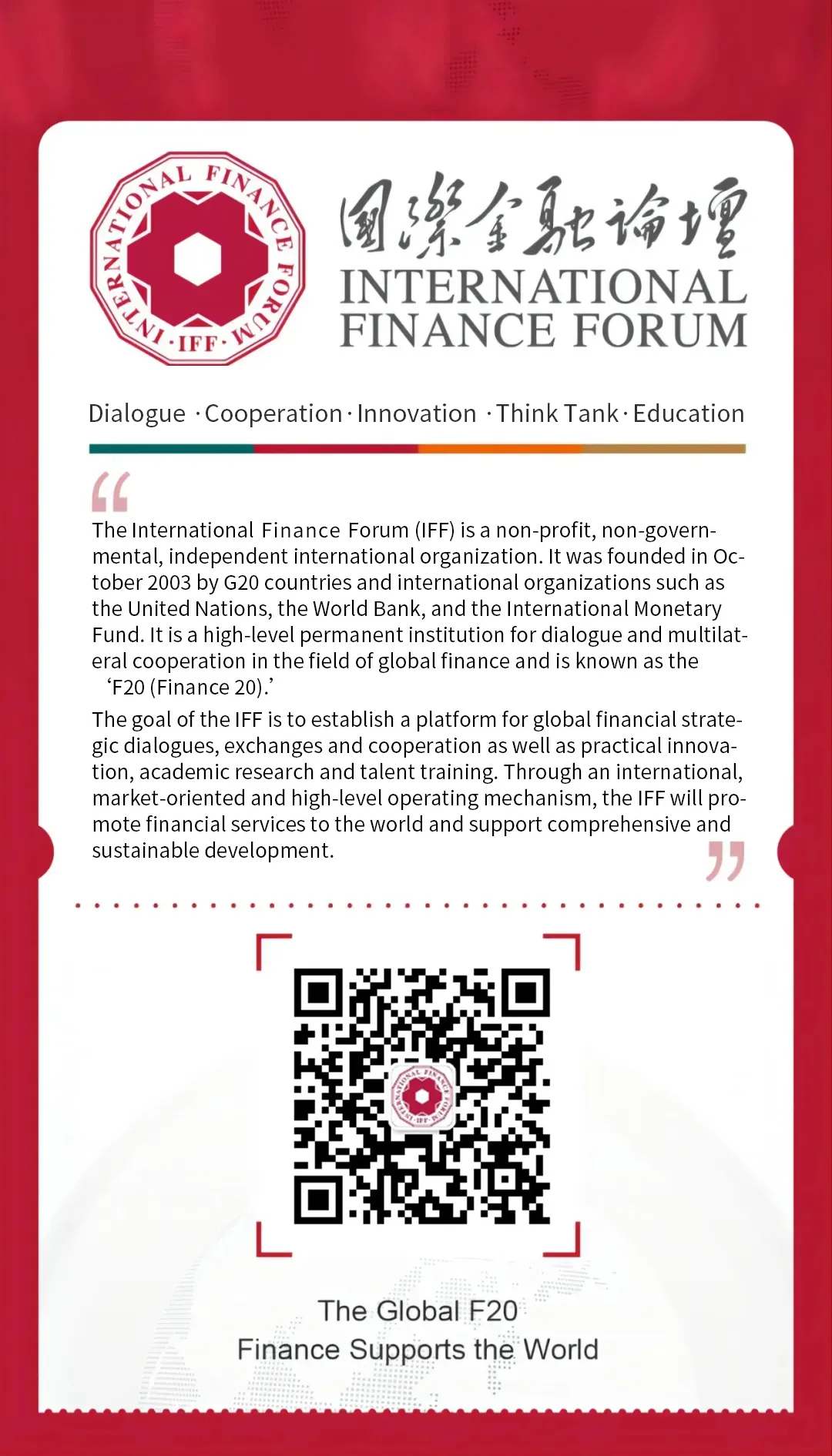HOME>NEWS CENTER>Newsletters
IFF Newsletter | Economic Optimism in Asia
TIME:2025-07-03
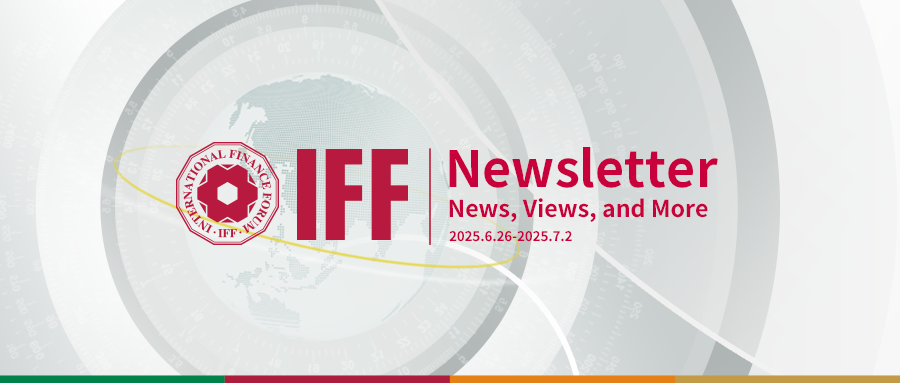
From the Editor
The manufacturing purchasing managers’ index, a gauge of industrial profitability, rose to 49.7 this month from 49.5 in May, according to figures released by the National Bureau of Statistics(NBS) on June 30.
The non-manufacturing PMI, which includes the construction industry and the services sector, advanced to 50.5 in June from 50.3 in the prior month. Meanwhile, the composite PMI, which includes both the manufacturing and non-manufacturing sectors, advanced to 50.7 from 50.4.
Confidence among Japan’s major manufacturers ticked up in June, reflecting resilience against the backdrop of the intensifying US tariff campaign, a quarterly Tankan report released by the Bank of Japan (BOJ) on July 1 showed. The data also bolstered the case for another BOJ interest rate hike this year.
The BOJ’s sentiment index for large manufacturers rose to 13 in June from 12 in March, surpassing economists’ forecasts of a decline to 10. The improvement was led by steel and paper producers. Meanwhile, the gauge for large non-manufacturers dipped slightly to 34 from 35, remaining near the highest levels since the early 1990s.

On June 27, 2025, the International Finance Forum (IFF), in collaboration with the European Carbon Pricing Leadership Coalition and the Institute for Governance & Sustainable Development (IGSD), will co-host an online conference themed “Overcoming New Hurdles in the Firms' Fight Against Global Warming.” The conference will focus on three key areas—renewable energy, green hydrogen, and fossil fuels—and will explore the critical roles and innovative practices of corporations in global climate governance.
China News
Tax Data Shows Continued Growth of China's New Quality Productive Forces

China's digital economy, high-tech industries and robotics sector -- key pillars of the country's new quality productive forces -- recorded notable growth last year, according to corporate income tax data released by the State Taxation Administration on July 2.
Last year, companies across the three sectors reported a 7.1 percent year-on-year increase in total operating revenue, with total profits rising by 5.2 percent, according to the data.
Specifically, the digital economy and its core industries recorded year-on-year growth of 5.9 percent in operating revenue and 2.7 percent in total profits last year. Among them, the information transmission, software and IT services sector posted an 11.5 percent rise in revenue and a 13.2 percent increase in profits.
Last year, the combined revenue and profits of high-tech industries, including pharmaceutical manufacturing and aerospace, grew by 8.9 percent and 7.5 percent year on year, respectively.
During the same period, the sectors of special-purpose robots, consumer services robots and industrial robots saw year-on-year growth of 28.4 percent, 12.4 percent and 7 percent in operating revenue, respectively.
China Sees Rapid Growth in New-energy, Clean-energy Vessels
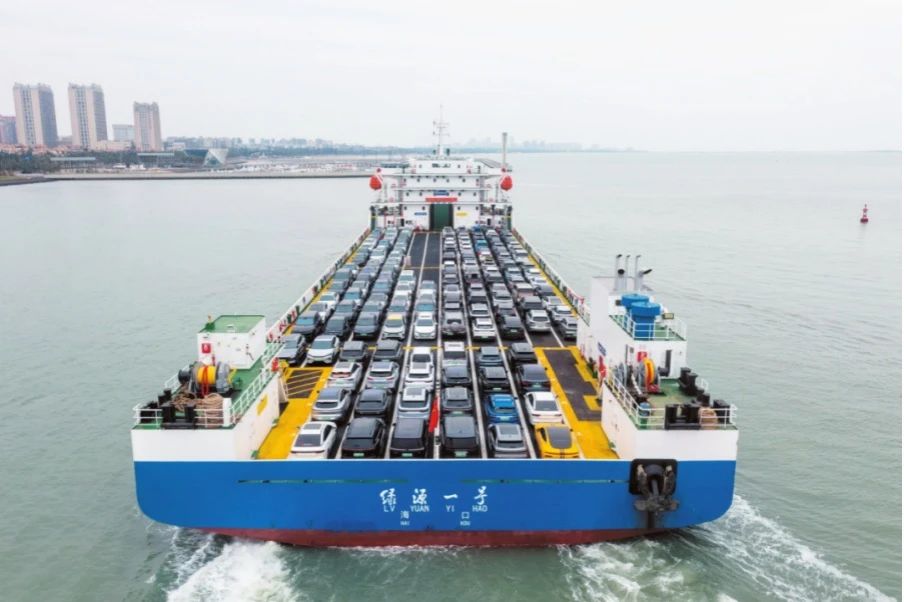
China is accelerating its shift to greener fuels in inland water transport, with more than 1,000 vessels powered by new energy or clean energy now operating nationwide, Vice Transport Minister Fu Xuyin told a press conference on June 27.
As of the end of 2024, the country had over 600 liquefied natural gas (LNG) vessels, primarily used for inland cargo transport, and 485 battery-powered electric vessels, mostly serving as passenger ferries.
A smaller number of inland vessels powered by methanol or hydrogen fuel cells are also in use, Fu added.
China's electric vessel industry has developed rapidly in recent years, leading globally in both scale and technological advancement, he said.
Alongside upgrading vessels, China is accelerating efforts to develop green, low-carbon ports, and this includes expanding and renovating inland port terminals with a focus on sustainability, Fu noted.
China is also developing near-zero-carbon inland terminals, encouraging the use of wind and solar power at ports, promoting the use of new energy and clean energy in port machinery and on-site transport vehicles, and prioritizing rail and new-energy trucks for bulk cargo handling, he added.
China's Bond Market Issuances Reach 7.2 Tln Yuan in May

Bond issuances in China neared 7.2 trillion yuan (about 1 trillion U.S. dollars) in May this year, data from the country's central bank shows on June 30.
Specifically, issuances of treasury bonds came in at 1.49 trillion yuan, while local government bond issuances amounted to 779.44 billion yuan, according to the People's Bank of China.
Financial bond issuances stood at 1.22 trillion yuan, and corporate credit bond issuances reached 902.27 billion yuan.
Outstanding bonds held in custody came in at 187.2 trillion yuan at the end of May.
China's Box Office Revenue Hits 29 Bln Yuan in First Half of 2025
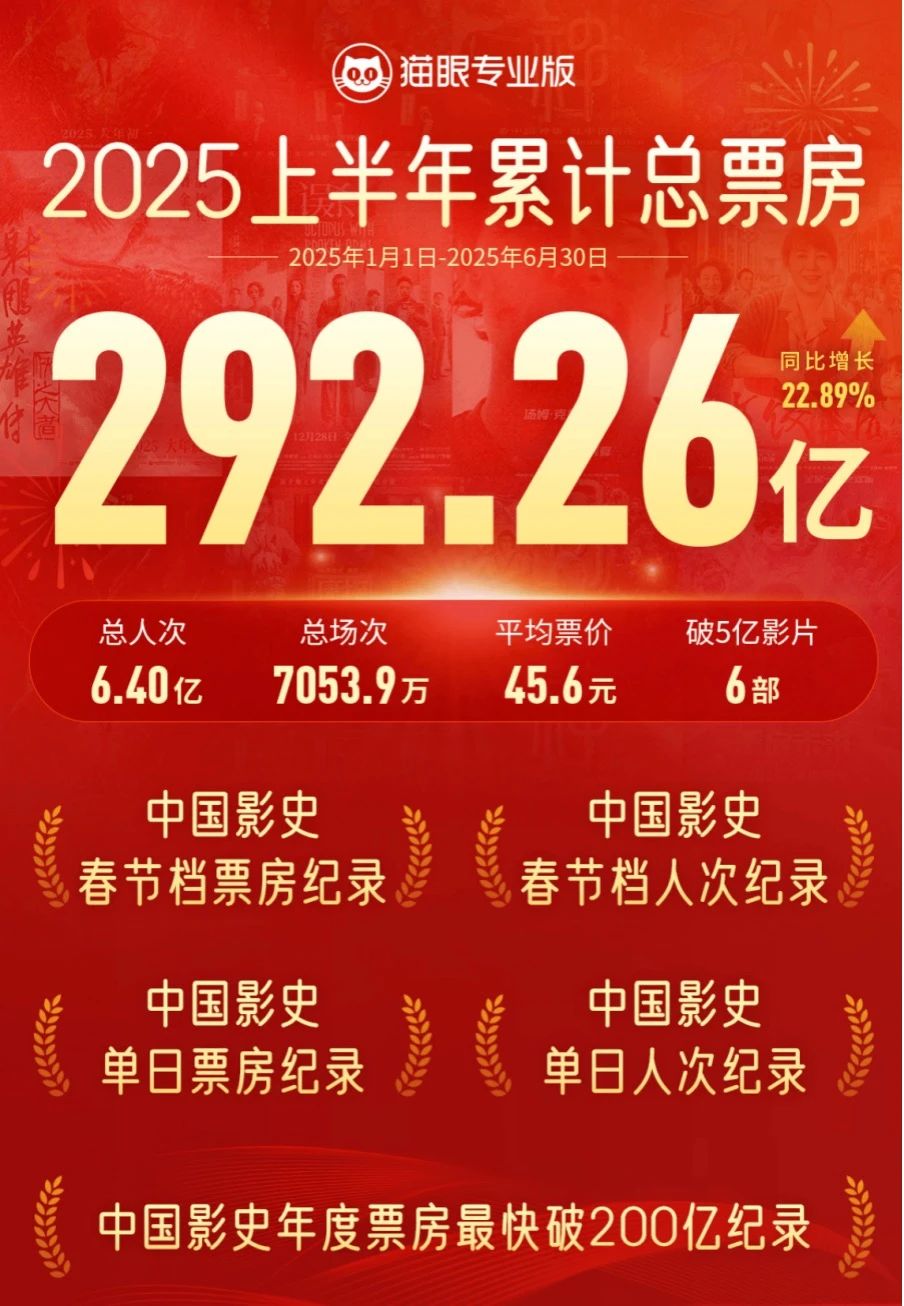
China's film market maintained strong growth in the first half of 2025, with total box office revenue exceeding 29.23 billion yuan (about 4.09 billion U.S. dollars), a 22.91 percent year-on-year increase, according to the data released by the National Film Administration on July 1.
During the same period, the number of moviegoers increased to 641 million, a 16.89 percent rise from the previous year, the data shows.
Domestic films accounted for 91.2 percent of the total earnings, playing an increasingly important role in the world's largest film market, data shows.
"Ne Zha 2," a domestic blockbuster that has amassed 15.45 billion yuan on the Chinese mainland in 2025, tops the Chinese box office chart as the most-watched and highest-grossing film ever in China.
China’s Factory Activity Edges Up for Second Straight Month in June as US Trade Tensions Thaw
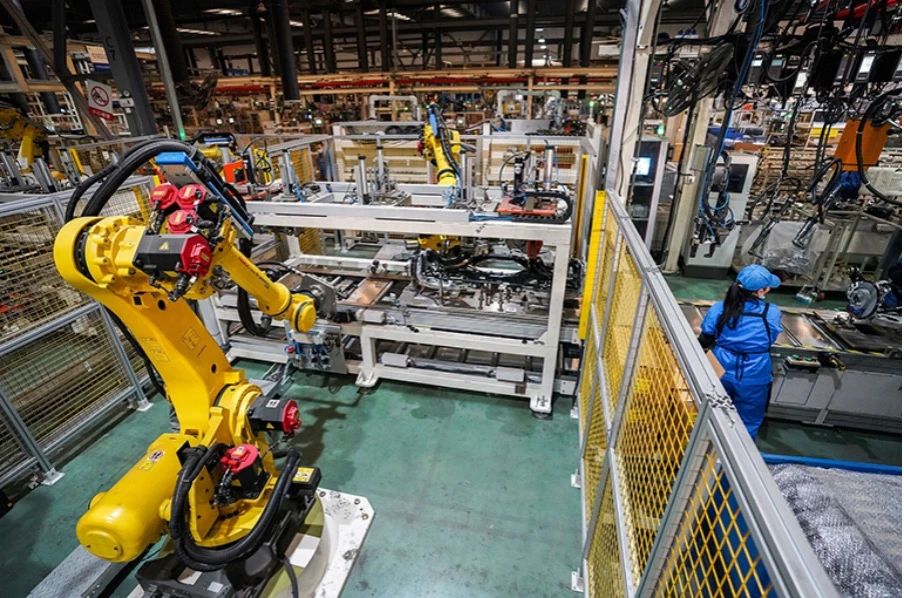
Activity in China’s manufacturing sector showed a modest improvement for the second month running in June, buoyed by easing trade frictions with the United States, while remaining in contraction territory for the third month in a row, according to figures released by the National Bureau of Statistics(NBS) on June 30.
The manufacturing purchasing managers’ index, a gauge of industrial profitability, stood at 49.7 for this month, up from 49.5 in May, NBS said. A reading below 50 indicates contraction.
The non-manufacturing PMI, which includes the construction industry and the services sector, advanced to 50.5 in June from 50.3 in the prior month. The construction PMI jumped to 52.8 from 51, while the services PMI dipped to 50.1 from 50.2.
The composite PMI, which includes both the manufacturing and non-manufacturing sectors, advanced to 50.7 from 50.4.
China’s Industrial Profits Slide in May

China’s industrial profits dropped sharply last month due to weak demand, tumbling prices and short-term volatility, according to data released on June 27 by the National Bureau of Statistics(NBS).
Profits at Chinese industrial enterprises above a designated size plunged 9.1 percent in May from the same period last year. This reversed the positive growth logged in the first four months, when profits expanded 1.4 percent from the year before, the data from NBS showed.
As a result, industrial profits dipped 1.1 percent in the five months ended May 31 from the same period last year to CNY2.7 trillion (USD379.4 billion), the NBS said.
However, despite the decline, the gross profit of these companies climbed 1.1 percent in the first five months year on year and revenue advanced 2.7 percent. The profits of private companies jumped 3.4 percent and that of businesses with investment from foreign entities as well as from Hong Kong, Macau and Taiwan edged up 0.3 percent.
Newsletter
International News
Japen's Business Confidence Beats Expectations

Confidence among Japan’s large manufacturers edged up in June, a sign of resilience in the face of the escalating US tariff campaign, according to the Bank of Japan’s quarterly Tankan report on July 1. And the data backed the case for another Bank of Japan interest rate hike this year.
The sentiment index for the country’s major manufacturers climbed to 13 from 12 in March, the BOJ’s report showed, beating economists’ expectations that it’ll fall to 10. The improvement was led by steel and paper makers. The gauge for large non-manufacturers slipped slightly to 34 from 35, staying near the highest levels since the early 1990s.
The better-than-expected reading for sentiment at large manufacturers is likely to give BOJ Governor Kazuo Ueda confidence he can keep the debate around a potential rate hike on the agenda when his board next meets at the end of the month. The main gauge has now stayed positive for more than four years, supporting the central bank’s contention that the economy continues to recover with pockets of weakness.
Eurozone Inflation Rate Reaches 2 Pct in June

The annual inflation rate in the Eurozone is expected to reach 2 percent for June, up from 1.9 percent in May, according to a flash estimate published on July 1 by Eurostat.
The inflation is driven by the price of services, which recorded a yearly inflation rate of 3.3 percent in June, up from 3.2 percent the previous month.
Core inflation, which excludes energy, food, tobacco and alcohol prices, was unchanged at 2.3 percent in June.
Among the main economies of the Eurozone, Germany recorded an inflation rate of 2 percent, down from 2.1 percent in May. France recorded an inflation rate of 0.8 percent, up from 0.6 percent in May, and Spain's inflation rate stands at 2.2 percent, up from 2 percent in May.
The highest inflation rate was recorded in Estonia at 5.2 percent, up from 4.6 percent the previous month, while Cyprus registered the lowest inflation rate for June at 0.5 percent, up from 0.4 percent in May.
Germany's Unemployment Rate Holds steady at 6.2 pct in June

A total of 2.914 million people were registered as unemployed during the month, a decrease of 5,000 compared to May.
Despite the slight month-on-month improvement, officials cautioned that the labor market continues to suffer from the effects of a sluggish economy. Compared to the same month last year, the number of unemployed rose by 188,000 in June, with the unemployment rate up by 0.4 percentage points.
The number of job vacancies declined to 632,000 in June, a year-on-year drop of 69,000, highlighting reduced labor demand.
US Manufacturing Activity Improved in June, But Sentiment Remains Low

Stronger production and inventory activity drove an improvement in U.S. manufacturing performance last month despite weaker demand, tariff uncertainty and inflation continuing to weigh on companies, according to the Institute for Supply Management’s June Purchasing Managers’ Index released on July 1.
The ISM’s index registered 49% in June, up 0.5 percentage points compared to the month prior. A PMI reading below 50% indicates the industry is in contraction.
Production recovered to 50.3% after four months of contraction, rising 4.9 percentage points from May. Additionally, inventories improved to 49.2%, up 2.5 percentage points from the previous month following a cargo surge ahead of the expected return of the Trump administration’s country-specific reciprocal tariffs in July. As supplier deliveries slowed, there was improved performance clearing goods through ports of entry, the report said.
Demand indicators such as new orders, backlog orders and new export orders continued to decline month over month in June as prices increased, according to the index report. Meanwhile, employment remained in contraction mode for the fifth-straight month as layoffs plague the sector.
S. Korea's Industrial Output Falls For 2nd Month in May
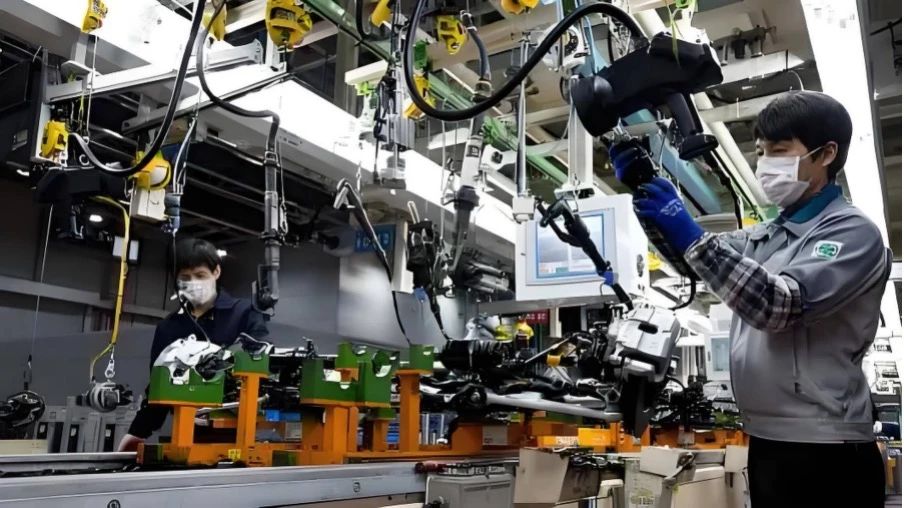
South Korea's industrial output fell for the second successive month due to negative effects of U.S. tariffs and sagging consumer demand, statistical office data showed on June 30.
The seasonally-adjusted production index in all industries, which excludes the agriculture, livestock and fishery sector, declined 1.1 percent in May from a month earlier after diminishing 0.8 percent in the previous month, according to Statistics Korea.
Output among manufacturers dropped 3.0 percent last month, faster than a decrease of 0.6 percent in April on the back of U.S. protectionist moves that reduced demand for local products.
Manufacturers posted an average capacity ratio of 71.7 percent in May, down 2.1 percentage points compared with the previous month.
Production in the construction industry retreated 3.9 percent in May after sliding 1.4 percent in the previous month.
Output in the service industry slid 0.1 percent, but production in the public administration sector swelled 0.8 percent last month.
Canada's Economy Shrinks in April

Canada's real gross domestic product (GDP) edged down 0.1 percent in April, following 0.2 percent increase in March, Statistics Canada said on June 27.
The goods-producing industries were down 0.6 percent in April, with the manufacturing sector accounting for nearly all the decline, said the national statistical agency.
According to the agency, the manufacturing sector was down 1.9 percent in April, the largest drop since April 2021. The transportation equipment manufacturing subsector was the largest contributor to the decline, coinciding with lower exports of passenger cars and light trucks as some motor vehicle manufacturers scaled back production amid uncertainty related to tariffs imposed on motor vehicle exports to the United States.
Advance information indicates that real GDP decreased 0.1 percent in May, said Statistics Canada.
